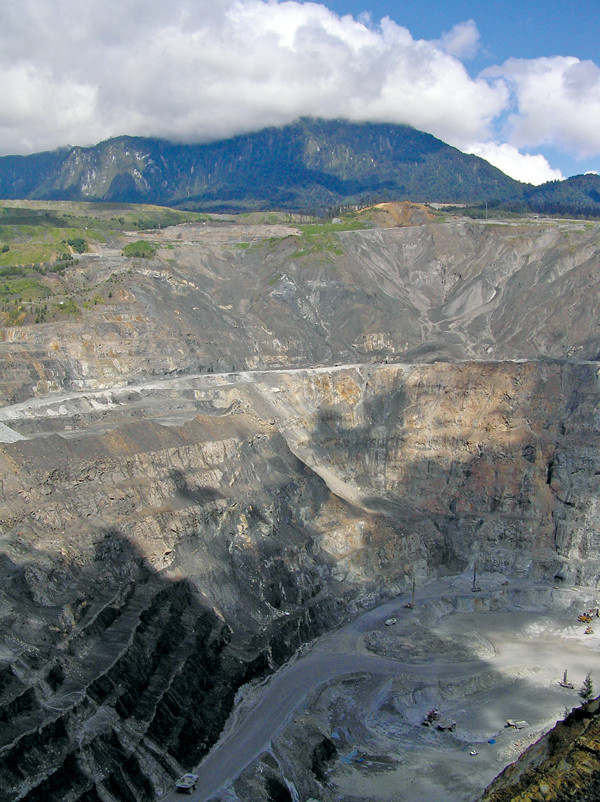
by Timothy Oleson Thursday, July 10, 2014

Researchers have linked pyrite in the Porgera gold mine in Papua New Guinea to the so-called fault-valve process of gold deposit formation. Credit: Richard Farbelini.
Pyrite, or “fool’s gold,” is an iron sulfide mineral commonly found in hydrothermal ore deposits. In such deposits, gold atoms can substitute for iron in the structure of pyrite, so pyrite crystals in gold mines often contain portions of the precious metal. Eleanor Peterson, a student at the Australian National University (ANU) in Canberra, and her advisor, John Mavrogenes, an economic geologist also at ANU, analyzed pyrites from the Porgera mine in Papua New Guinea, where quartz veins in the Roamane Fault Zone host high-grade gold ores.
Using high-resolution mass spectrometry and an ion microprobe to scan cross-sections of the crystals, Peterson and Mavrogenes found that those collected from the richest parts of the mine were composed of concentric repeating bands of pyrite — some just a few microns thick — that alternated strikingly between high and low gold contents. The gold-enriched bands also contained higher concentrations of other elements, like silver and copper, compared to the depleted bands, as well as vastly different sulfur isotopic signatures, the researchers reported in Geology.
“We were absolutely shocked” to see such sharp and well-preserved compositional differences between the bands, Mavrogenes says, adding that the findings offer the first “direct evidence” for the viability of the fault-valve model. Although the model was proposed in the late 1980s and has been popular among geologists, it has lacked support from physical evidence — such as large-scale textures and fluid inclusions in the rock — that might have shed light on such ore deposits’ origins. Also, Mavrogenes says, the ability to analyze mineral crystals at the fine scale used in this study has only been around for about 10 years.
The fault-valve model imagines a fault zone whose many crevices are permeated by fluid — magmatically sourced mineral-rich fluid in the case of Porgera — that becomes pressurized as tectonic stress builds up. When the fault ruptures in an earthquake, this pressure drops precipitously. That allows fresh fluid to infiltrate cracks in the rock and triggers rapid precipitation of quartz, gold — both incorporated in pyrite and as blebs of native metal — and other minerals as they suddenly become insoluble. As the fault locks up and pressure begins building again, the remaining fluid re-equilibrates and the pattern of precipitation changes.
“Clearly something very dramatic is happening to give rise to these … fluctuations” in pyrite, says Jeremy Richards, an economic geologist at the University of Alberta in Edmonton who has studied the Porgera mine but wasn’t involved with the recent study. “Nature doesn’t produce gold deposits like [at Porgera] by just carrying on as usual. You’ve got to really kick it out of equilibrium,” he says. “And the most reasonable explanation is a fault-valve seismicity model where short, transient events result in rushes of fluid flow” and rapid mineral deposition.
The exact timescale of the process is still unclear, Mavrogenes says, but the narrow, back-and-forth high-gold-to-low-gold banding in some of the pyrites may result from earthquake swarms or aftershock sequences repeatedly rupturing the Roamane Fault Zone over a short duration.
Other details remain to be sorted out as well, including the origin of the large sulfur isotopic differences between bands of pyrite and whether this alone is responsible for gold precipitation or if factors such as the simultaneous loss of volatile gases from solution may contribute. But, Richards says, the study is important because it “puts some real numbers” to the fault-valve model, and increases “the general understanding of how these [ore] systems are formed.”
© 2008-2021. All rights reserved. Any copying, redistribution or retransmission of any of the contents of this service without the expressed written permission of the American Geosciences Institute is expressly prohibited. Click here for all copyright requests.